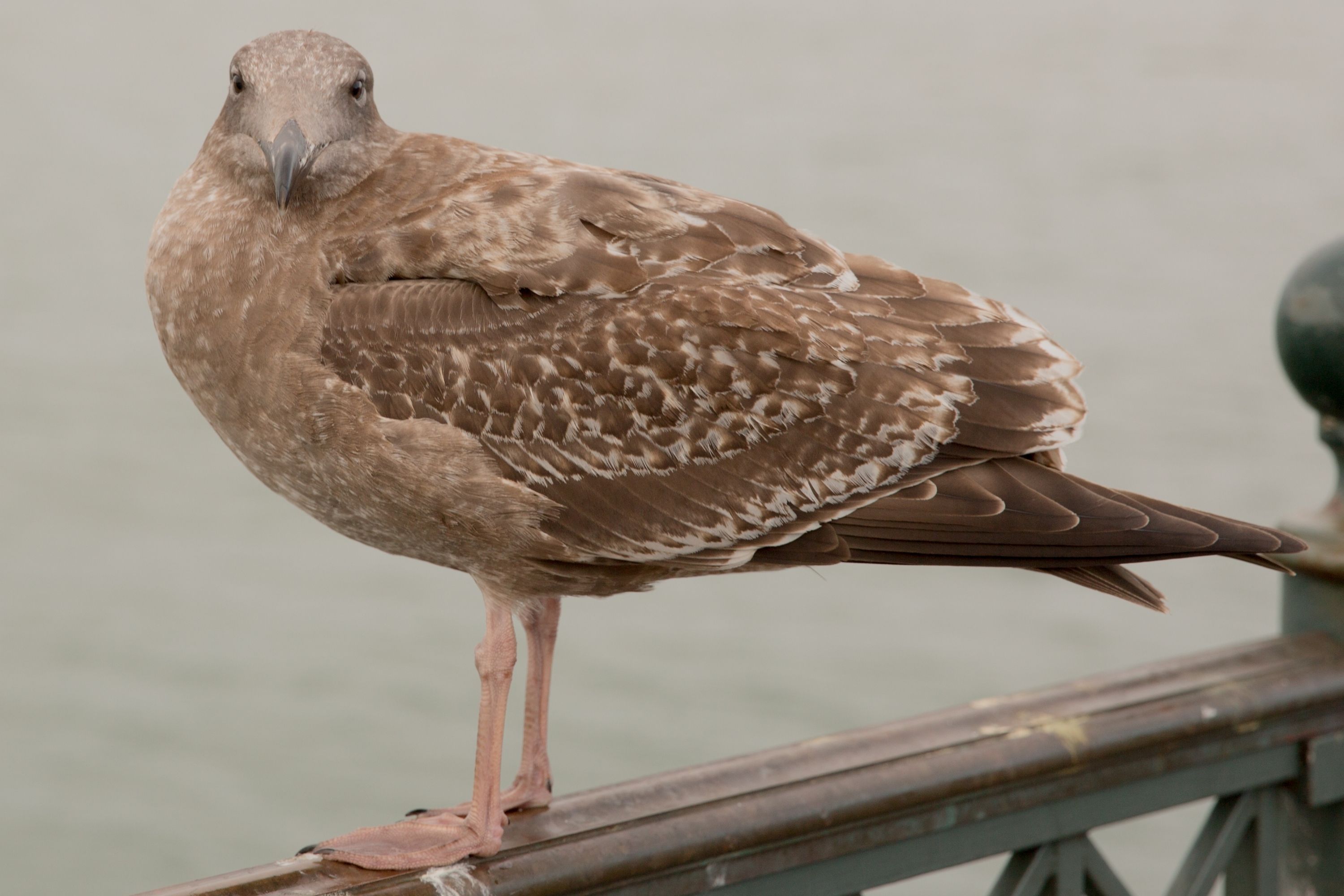American herring gull
(Larus smithsonianus)

Description
The American herring gull or Smithsonian gull (Larus smithsonianus or Larus argentatus smithsonianus) is a large gull that breeds in North America, where it is treated by the American Ornithologists' Union as a subspecies of herring gull (L. argentatus). Adults are white with gray back and wings, black wingtips with white spots, and pink legs. Immature birds are gray-brown and are darker and more uniform than European herring gulls, with a darker tail. It occurs in a variety of habitats including coasts, lakes, rivers and garbage dumps. Its broad diet includes invertebrates, fish, and many other items. It usually nests near water, laying around three eggs in a scrape on the ground. It is a heavily built large gull with a long powerful bill, full chest and sloping forehead. Males are 60–66 cm (24–26 in) long and weigh 1,050–1,650 g (2.31–3.64 lb). Females are 53–62 cm (21–24 in) long and weigh 600–900 g (1.3–2.0 lb). The wingspan is 120 to 155 cm (47 to 61 in). Among standard measurements, the wing chord is 41.2 to 46.8 cm (16.2 to 18.4 in), the bill is 4.4 to 6.2 cm (1.7 to 2.4 in) and the tarsus is 5.5 to 7.6 cm (2.2 to 3.0 in). Breeding adults have a white head, rump, tail, and underparts and a pale gray back and upperwings. The wingtips are black with white spots known as "mirrors" and the trailing edge of the wing is white. The underwing is grayish with dark tips to the outer primary feathers. The legs and feet are normally pink but can have a bluish tinge, or occasionally be yellow. The bill is yellow with a red spot on the lower mandible. The eye is bright, pale to medium yellow, with a bare yellow or orange ring around it. In winter, the head and neck are streaked with brown. Young birds take four years to reach fully adult plumage. During this time they go through several plumage stages and can be very variable in appearance. First-winter birds are gray-brown with a dark tail, a brown rump with dark bars, dark outer primaries and pale inner primaries, dark eyes, and a dark bill, which usually develops a paler base through the winter. The head is often paler than the body. Second-winter birds typically have a pale eye, pale bill with black tip, pale head and begin to show gray feathers on the back. Third-winter birds are closer to adults but still have some black on the bill and brown on the body and wings and have a black band on the tail.
Taxonomic tree:







